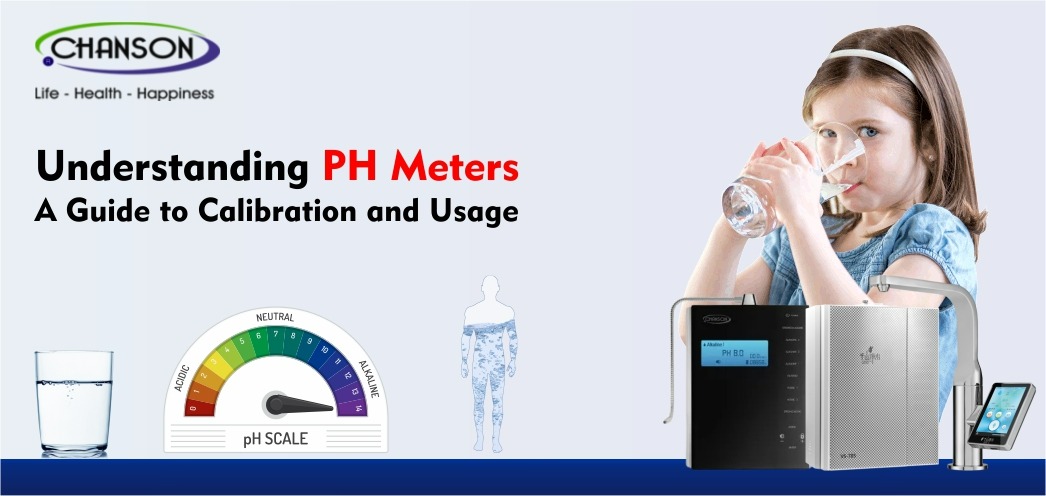Understanding pH Meters: A Guide to Calibration and Usage
pH meters are invaluable tools in various industries, laboratories, and even everyday applications. These devices measure the acidity or alkalinity of a solution by quantifying the concentration of hydrogen ions. Whether you're a scientist, a hobbyist, or a professional in fields such as chemistry, biology, or environmental science, understanding how to calibrate and use a pH meter is essential for obtaining accurate and reliable results.
What is a pH Meter?
A pH meter is a scientific instrument that measures the hydrogen ion concentration in a solution, which is used to determine its acidity or alkalinity. The pH scale ranges from 0 to 14, with 7 being neutral, lower values indicating acidity, and higher values indicating alkalinity. pH meters consist of a probe, an electrode, and a metering device.
Calibration Process:
Calibrating a pH meter is a crucial step to ensure its accuracy and reliability. Here's a step-by-step guide on how to calibrate a pH meter:
Select the Calibration Standards:
Begin by selecting at least two calibration standards that bracket the expected pH range of your samples. Buffer solutions with known pH values, such as pH 4.01, 7.00, and 10.01, are commonly used for calibration.
Prepare the pH Meter:
Turn on the pH meter and ensure that it's clean and free from any residue. If necessary, rinse the electrode with distilled water.
Immerse the Electrode:
Immerse the electrode into the first buffer solution. Allow it to stabilize for a few minutes until a steady reading is achieved.
Adjust the Calibration:
Using the calibration controls on the meter, adjust the reading to match the known pH value of the buffer solution. Repeat this process with the second buffer solution.
Final Verification:
After calibrating with two standard solutions, it's advisable to check with a third solution to verify accuracy. If necessary, make additional adjustments.
Using a pH Meter:
Once calibrated, using a pH meter becomes a straightforward process. Here are some essential steps:
Prepare the Sample:
Ensure that your sample is well-mixed and at the appropriate temperature. pH readings can be temperature-dependent, so be aware of any necessary corrections.
Immerse the Electrode:
Gently immerse the electrode into the solution, avoiding any air bubbles that could affect accuracy. Allow the reading to stabilize before recording.
Cleaning the Electrode:
Rinse the electrode with distilled water between measurements and, if needed, use a pH electrode cleaning solution. This helps maintain the electrode's sensitivity and accuracy.
Recording the Measurement:
✅ Easy-to-Use Technology: Embrace simplicity without compromising sophistication. Our user-friendly design ensures hassle-free operation, making it the perfect companion for both beginners and experts.
🌟 Unlock a World of Balance!
Take charge of your well-being with the American Marine pH Meter. Explore the fascinating world of pH balance, understand your body's needs, and empower yourself with the knowledge to make informed lifestyle choices.
🔥 Grab Your pH Meter Now!
ADD CTA - Contact Us For More Information
Click https://chansonqualitywater.com/pinpoint-ph-meter to discover the tool that empowers you to measure, monitor, and maintain balance effortlessly. Don't just gauge, gain control over your pH levels – start your journey to a harmonious life today! 🌿💦
Latest Blog
-
03 Jun 2025
The Benefits of Alkaline Ionized Water During Pregnancy -
03 Jun 2025
Dr Softener, the Best Water Softener -
27 Apr 2025
Alkaline water ionizer Your Insurance to Good Health and Longer Life -
19 Feb 2025
Prevent Bone Aches in Cold Weather with Alkaline Water: Essential Tips -
03 Feb 2025
Looking for Winter Wellness? Discover How Alkaline Water Strengthens Your Bones -
03 Feb 2025
The Science Behind Ionized Water and Reduced Inflammation -
22 Dec 2024
Winter-Safe Hydration: Why Alkaline Water Is the Best Choice

All Rights Reserved. © 2025 Centrepoint Lifestyle Products Pvt Ltd.









